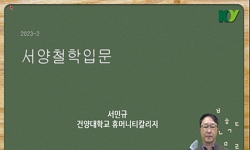The aim of this study is to explain of cultural background of Camera Obscura, which is considered like origin of photography. This optical instrument was widely used for observe natural phenomenon since the Middle ages, but for draw a picture exquisit...
http://chineseinput.net/에서 pinyin(병음)방식으로 중국어를 변환할 수 있습니다.
변환된 중국어를 복사하여 사용하시면 됩니다.
- 中文 을 입력하시려면 zhongwen을 입력하시고 space를누르시면됩니다.
- 北京 을 입력하시려면 beijing을 입력하시고 space를 누르시면 됩니다.

카메라 옵스쿠라(Camera Obscura)의 문화사적 배경 -자연학에서 과학혁명까지- = Cultural Background of Camera Obscura -From Physica to Scientific Revolution-
한글로보기https://www.riss.kr/link?id=A82668605
- 저자
- 발행기관
- 학술지명
- 권호사항
-
발행연도
2011
-
작성언어
Korean
- 주제어
-
KDC
660.4
-
등재정보
KCI등재
-
자료형태
학술저널
- 발행기관 URL
-
수록면
7-17(11쪽)
-
KCI 피인용횟수
0
- 제공처
-
0
상세조회 -
0
다운로드
부가정보
다국어 초록 (Multilingual Abstract)
The aim of this study is to explain of cultural background of Camera Obscura, which is considered like origin of photography. This optical instrument was widely used for observe natural phenomenon since the Middle ages, but for draw a picture exquisitely during the Renaissance period. The first user of Camera Obscura is Al-Hazen, arabian philosopher who made use of this instrument for observe eclipse of the sun. Many artists of the Renaissance used it, on the other hand, for description of detail, according to the tradition of Magiae Naturalis inherited Physica, that is to search for law of natural phenomenon. Descartes, a grate philosopher of 17th century, describe this optical instrument in his 『Dioptrique』that he explain how we can make glasses. From physica to scientific revolution, Camera Obscura contributed to the birth of natural science, was based on the extension of scientific knowledge. This instrument not was assistant instrument for drawing, but methode for accumulation or scientific knowledge.
참고문헌 (Reference)
1 에티엔느 질송, "중세철학사" 현대지성사 1997
2 데이비드 린드버그, "서양과학의 기원들" 나남 1992
3 마틴 켐프, "보이는 것과 보이지 않는 것" 을유문화사 2010
4 데이비드 호크니, "명화의 비밀" 한길아트 2003
5 조나단 크래리, "관찰자의 기술" 문화과학사 2001
6 야마모토 요시타카, "과학의 탄생" 동아시아 2005
7 Helmut, "The Origins of Photography" Thames and Hudson 1982
8 Damisch, Hubert, "L’Origine de la perspective" Flammarion 1987
9 Foucault, Michel, "Les Mots et les choses" Gallimard 1966
10 De Libera, Alain, "La Philosophie médiévale" PUF 1993
1 에티엔느 질송, "중세철학사" 현대지성사 1997
2 데이비드 린드버그, "서양과학의 기원들" 나남 1992
3 마틴 켐프, "보이는 것과 보이지 않는 것" 을유문화사 2010
4 데이비드 호크니, "명화의 비밀" 한길아트 2003
5 조나단 크래리, "관찰자의 기술" 문화과학사 2001
6 야마모토 요시타카, "과학의 탄생" 동아시아 2005
7 Helmut, "The Origins of Photography" Thames and Hudson 1982
8 Damisch, Hubert, "L’Origine de la perspective" Flammarion 1987
9 Foucault, Michel, "Les Mots et les choses" Gallimard 1966
10 De Libera, Alain, "La Philosophie médiévale" PUF 1993
11 Descartes, René, "La Diopotrique in Discours de la méthode" Flammarion 1992
12 김성환, "17세기 자연철학" 그린비 2008
13 야마모토 요시타카, "16세기 문화혁명" 동아시아 2010
동일학술지(권/호) 다른 논문
-
시각디자인전공에서 사진교육 교과내용별 중요성에 대한 수강생의 인식실태에 대한 분석연구
- 한국사진학회
- 서영상 ( Young Sang Seo )
- 2011
- KCI등재
-
사진의 디지털화에 따른 사진교육계의 현실과 문제 -대학사진교육 종사자의 의견을 중심으로-
- 한국사진학회
- 안시준 ( Si Joon An )
- 2011
- KCI등재
-
- 한국사진학회
- 이동준 ( Dong Jun Lee )
- 2011
- KCI등재
-
X선 사진의 판독 효율 향상을 위한 노출과 현상 기법에 관한 연구
- 한국사진학회
- 장선필 ( Seon Phil Jang )
- 2011
- KCI등재
분석정보
인용정보 인용지수 설명보기
학술지 이력
| 연월일 | 이력구분 | 이력상세 | 등재구분 |
|---|---|---|---|
| 2023 | 평가예정 | 재인증평가 신청대상 (재인증) | |
| 2020-01-01 | 평가 | 등재학술지 선정 (재인증) |  |
| 2018-01-01 | 평가 | 등재후보학술지 선정 (신규평가) |  |
| 2016-12-01 | 평가 | 등재후보 탈락 (계속평가) | |
| 2015-12-01 | 평가 | 등재후보로 하락 (기타) |  |
| 2011-01-01 | 평가 | 등재학술지 유지 (등재유지) |  |
| 2009-01-01 | 평가 | 등재학술지 유지 (등재유지) |  |
| 2007-01-01 | 평가 | 등재 1차 FAIL (등재유지) |  |
| 2004-01-01 | 평가 | 등재학술지 선정 (등재후보2차) |  |
| 2003-01-01 | 평가 | 등재후보 1차 PASS (등재후보1차) |  |
| 2002-01-01 | 평가 | 등재후보 1차 FAIL (등재후보1차) |  |
| 2000-07-01 | 평가 | 등재후보학술지 선정 (신규평가) |  |




 KCI
KCI KISS
KISS



